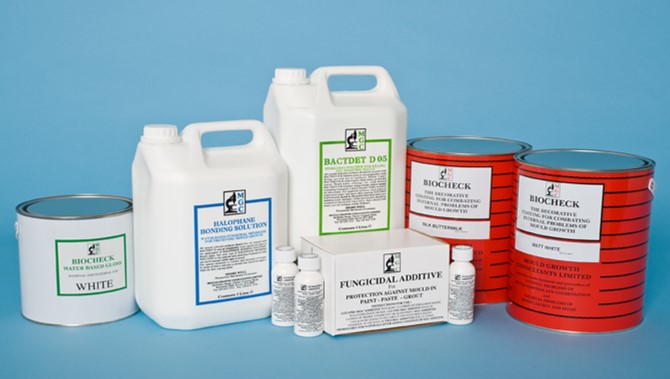Fighting Mould and Damp with the Experts

Andrew Edmunds from experts Mould Growth Consultants looks at the issues around mould and damp and how consultants can work alongside painters and decorators to fix the problem.
Damp, mould and condensation have never been more in the news since the recent sad death of a young child, which brought about sweeping changes in the law and recommendations to social housing providers by the government and the ombudsman.
The news clearly shows that there are health issues related to being exposed long term to damp and mould spores and how it can possibly cause a wider range of allergies and more serious respiratory problems.
Naturally occurring
Mould spores are naturally everywhere at home, work and in every environment and usually cause little harm, but once active things can change quickly.
One key point is that mould is always a symptom of another issue within the property whether it be poor heating or insulation, lack of ventilation even to structural issues such as rising penetrating damp or bursts and leaks, etc.
The Human touch
We humans also have an effect on the potential for mould and damp to become a problem. We can choose when to heat and ventilate our properties and how much moisture is generated through our daily activities from cooking, bathing, breathing and of course drying washing indoors; all of this adds moisture in our properties.
For over 56 years mould growth consultants have been advising and supporting contractors and a variety of other partners including housing associations and councils, private landlords and homeowners with product advice, surveying, training and supplying insulation solutions for hard-to-treat homes.

Tackling The Problem
MGC three stage treatments have been designed to tackle different parts of the mould structure and prolong the life of the required decorative finish.
Stage 1. MGC fungicidal wash, this is designed to eradicate and clean the mould spores on contact thus reduce the chance of spreading them. The treatment must be extended 1mtr past any visible infection to eliminate the unseen root system. Affected wallpaper also must be washed and removed.
Stage 2. Fungicidal barrier is applied, this is designed to eradicate the root system and leave a protective film as a barrier.
Stage 3. Once the pre-treatments are dry, as a bare minimum the use of MGC fungicidal additive is recommended and can be added to any water-based paint, this will prolong the life of the decorative finish in resisting any future mould growth, this additive can also be placed into wallpaper paste, grout and filler.
For greater protection and especially in the case of severe infections or little change in the environment that may have caused the mould to form the MGC Biocheck emulsion has been approved and tested to give maximum mould resistance.
No such thing as a quick fix
There are plenty of quick fix products on the market Such as the spray wipe and walk type treatments, but many these mostly contain bleach which will remove the discoloration but will not fully eradicate the mould and its rooting system, many of these may only buy limited time.
Most importantly customers should be advised try to find out the true cause. Balanced heating and ventilation will always help, not pushing furniture too close to external wall surfaces encourage air flow, and especially not drying clothing indoors. Covering pans when cooking and keeping bathroom and kitchens doors closed when in use and exiting are also important and all these actions will assist in reducing the chance of mould returning.







